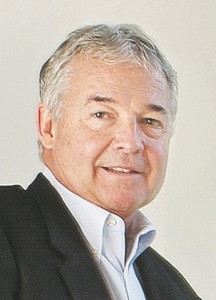Coherix to use $12M in funding from China for IPO, revenue growth

By Dustin Walsh, Crain’s Detroit Business, September 6, 2015
Ann Arbor-based Coherix Inc. plans to use $12 million in new funding to reposition the device manufacturer for an initial public offering.
Coherix makes optical-based 3-D measurement and inspection devices for the automotive and semiconductor industries. Its founder aims to go big with its bandwidth. The goal is to create a company worth $1 billion with revenue of more than $100 million by 2020. Current revenue is less than $10 million.
The $12 million in new funds from a July investment round come from Coherix’s partner in a Chinese joint venture, Huzhou ShinTai Lighting Electric Apparatus Co. Ltd., said Dwight Carlson, Coherix chairman and CEO. The funds will go toward marketing and sales to get more clients spending top dollar for Coherix’s technologically advanced equipment.
Carlson said the company sought money from China because domestic investors tended to turn a blind eye to manufacturing investments after the recession.
“After surviving the recession in Michigan, there was no capital available from a domestic institutional investor,” Carlson said. “Manufacturing is one black mark. Being in Michigan is another. And if you say ‘automotive’ in Detroit — well, they run away from you so fast … you’d think we have the plague.”
Carlson said companies supplying products for manufacturing processes aren’t as attractive to investors because of high costs. Coherix’s equipment costs between $10,000 and $250,000, he said.
Adrian Fortino, a partner in the Houston-based Mercury Fund who is running the venture capital firm’s Ann Arbor office, said the high-cost nature of “intelligent” manufacturing equipment can turn off investors.
“Look, it’s much easier to get something like software commercialized with fewer costs than heavy hardware,” Fortino said. “A lot of investors are sensitive to the longer time line of implementing equipment across a factory or several. That’s why there’s this feeling of less capital available.”
Carlson said he is all too aware of the long return-on-investment time line for companies that improve manufacturing processes.
He founded Perceptron Inc., which manufactures equipment similar to Coherix’s and is now based in Plymouth Township, in 1981. Investors didn’t see significant returns for 13 years until Perceptron went public.
By the time Carlson stepped down as CEO in 1996, the company had grown to revenue of $52 million and a market valuation of $350 million.
In 2014, Perceptron (Nasdaq: PRCP) reported net income of $2.43 million on revenue of $59.6 million.
Coherix, founded in 2004, is still waiting for its major liquidity event.
“In the ’80s and ’90s, the money just flooded in,” Carlson said of funding for his previous companies. “Now investors have wonderful alternatives. Twitter or Flitter or Ditter … companies like that turn bucks real fast, and that’s a real problem for a company like mine.”
Growth capital
But the new funding from China will go a long way toward getting the Coherix name into the ears of purchasing chiefs, Carlson said.
Roughly $8 million will go to sales and marketing in the U.S. and the remaining $4 million to itsCoherix China joint venture for the same purpose, he said.
Panasonic Corp. remains Coherix’s largest customer. Panasonic was also an early investor, providing Coherix $5.2 million over three years to develop technology for its electronics division.
Coherix has raised $60 million to date, Carlson said, and plans an initial public offering by 2020.
However, it has missed the mark on going public in the past. Carlson told Crain’s in 2006 that the company planned to go public by 2009. But the auto industry collapsed, and the Great Recession took hold.
“In the middle of our plans, the world came apart; our customers went bankrupt,” he said.
But Carlson is confident that the new funds, along with a recovered global market, will help Coherix accomplish its goal of an IPO.
“Coherix will be a public company,” he said. “It will be public and be in Michigan and hire 1,000 people in high-paying jobs.”